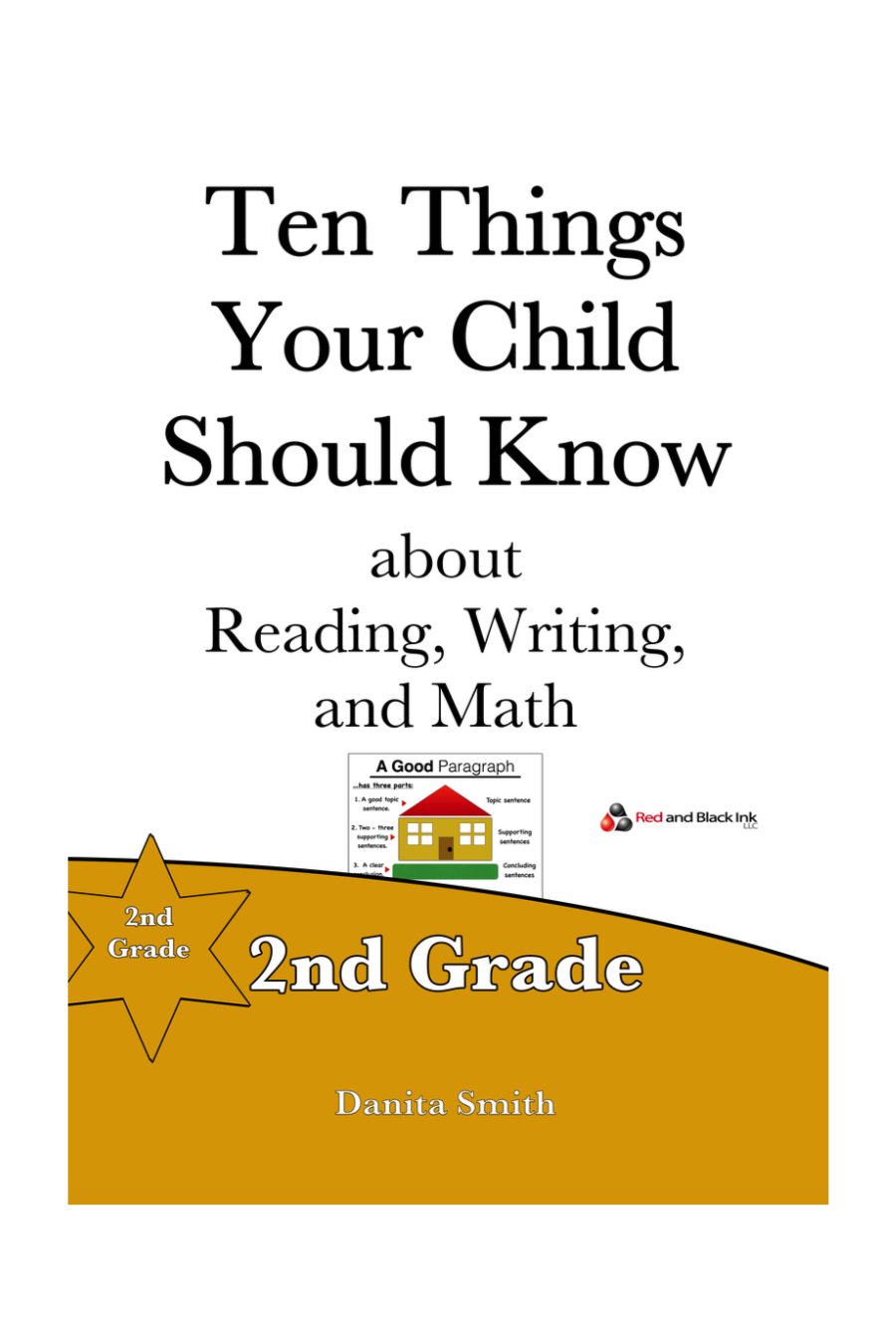Reading Tips for 2nd Grade: Sound Blends
Excerpt from Ten Things Your Child Should Know (1st grade and 2nd grade books)
“Your child will learn what certain root words sound like when common endings are added to them, such as “ed,” “ing,” “s,” etc. “Walk” can become “walked,” “walking,” or “walks.”
So (in first and/or second grade) your child is likely to:
Review the short sounds of the vowels, a, e, i, o, and u, in words like “mat,” “bet,” “sit,” “top,” and “cup.”
Learn the long sounds of these vowels in words like “make,” “eat,” “site,” “rope,” and “mute.”
Learn that “y” can sometimes be used as a vowel in words like “baby” and “sky.”
Learn that two letters can be combined together to make one sound; these are called digraphs.
(Some examples of consonant digraphs are “ch,” “sh,” “th,” “wh,” “ph,” “ck,” “mb,” “kn,” etc... Words like “that,” “phone,” “where,” “comb,” and “know” all have digraphs in them.)
(Some examples of vowel digraphs are “ai,” “ay,” “ee,” “ey,” “oa,” “oo,” “oy,” etc... Words like “sail,” “say,” “feet,” “hey,” “boat,” and “boy” all have digraphs in them.)
Learn that some vowels change their sound slightly when “r” comes after them. For instance, the letter “a” makes its short and long sounds like the sounds it makes in the words “apple” or “ape.” Yet when “r” comes after it, in certain words the sound that “a” makes changes, as in the words “car” or “star.” The same is true for words like “sir,” “stir,” “her,” “for,” and “fur.” Your child will have to get use to pronouncing words where “r” affects the sound of a vowel.
Learn that other groupings of letters such as “igh” and “ike” make certain sounds like those contained in the words “sigh” and “like.”

